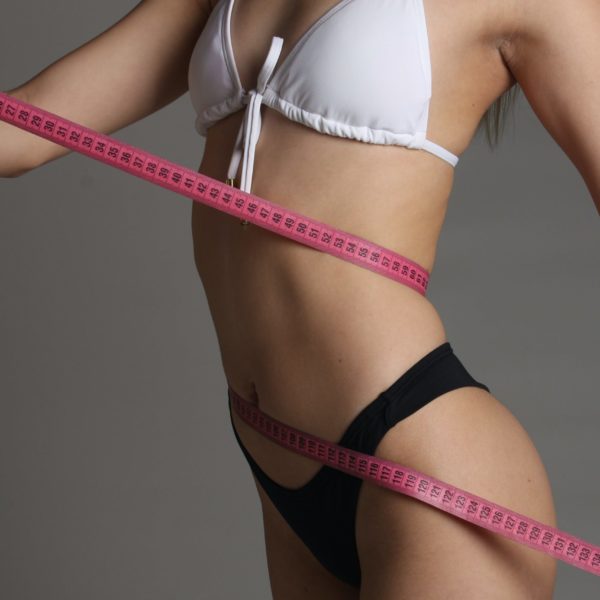
You might be in much better shape than most people your age and still experience negative self-talk:
”I’ve always been fat!”, comparing your body to some vague “gold standards” of skinniness. Or, it could be that you just want to have less body fat for health reasons. So, the tiny bit of the lower-stomach fat pulling the fabric of your shirt bothers you:
“Do I have too much fat stored in my body?”
You might reach out to the fastest and least complex formula. After all, you have to start somewhere:
Weight in kilograms divided by height in meters squared = BMI (body Mass Index)
- If your BMI falls under 18.5, you are within the underweight range.
- If your BMI is between 18.5 and 24.9, your weight is in the healthy range.
- If your BMI is between 25.0 and 29.9, you are considered overweight.
- If your BMI is above 30.0, you are within the obese range.
The BMI guide invented almost two centuries ago can give you some perspective. If you are too far off the normal range, you might be in a bad crowd. Too much under or over, and your health starts to decline. The problem is that the BMI only takes into account your height and weight and not other factors like the muscle mass, so it might not be the most appropriate indicator of your body fat measurement and whether you are considered “overweight”, “underweight”, “healthy” or “unhealthy”.
It is possible to have a higher-than-normal BMI and still be fit. In other words, The BMI can flag a person with a highly developed musculature, e.g. an athlete, as overweight and “unhealthy”, when they are anything but. The BMI can also ironically approve a razor-thin undernourished model whose meals consist of lettuce and diet coke only, as healthy and fit.
When low-fat dieting was all the rage, spreading a bit of butter on your toast would get you sentenced to hard times. We don’t know about you, but we are glad those days are pretty much over. There’s a time and place for all types of fats. In fact, fats are necessary for optimal health (proper absorption of minerals and vitamins, brain development, protection, cushioning and insulation of internal organs). However, gaining fifty pounds or getting so fat you can barely walk are not free shots.
Every day, science unveils more about the mechanisms driving the health of our bodies. Research has shown that fat cells — particularly visceral fat cells — are biologically active. One of the most important developments [since the mid-1990s] is the realization that the fat cell is an endocrine organ,
secreting hormones and other molecules that have far-reaching effects on other tissues.
That means that the adorable potbelly can be dangerous to your health and is directly correlated with total high cholesterol and LDL (bad) cholesterol, lower HDL (good) cholesterol and insulin resistance.
The most appropriate way to assess your body fat is to understand and evaluate the visceral fat depot, i.e. belly fat found deep within your abdominal cavity.
What Is the Best Way to Measure and
Monitor Visceral Fat?
As we get older, the proportion of fat to body weight tends to increase and fat starts to build in the upper body area, particularly around the waistline. This gradual accumulation of abdominal fat is not only a cosmetic concern but also poses some health risks. No healthcare system can keep up with the consequences of the many health implications of having too much visceral fat. And it would be a great idea, for your health, your energy, and your looks to keep tabs on your body’s visceral fat.
Luckily, there are steps you can take to measure and monitor visceral fat:
1. Tape Measure

Measuring your waist circumference, slightly above your belly button, using a simple tape measure is the easiest and most convenient way to check and monitor your visceral fat. Ideally, measure yourself naked or wearing tight-fitting clothes. It is reasonable to measure your waist regularly, for instance once a month. It is important to keep an eye on whether your waist is consistently growing, rather than focusing on achieving a certain number.
2. CT or MR Scans
Whole body CT or MR scans can very accurately determine the amount and
location of body fat. However, they are both very costly. In addition, CT scans
expose the body to some radiation.
3. Underwater Weight

Underwater weighing also known as hydrostatic weighing technique measures our weight underwater. Since fat is less dense than bones and muscles, the lower a person’s weight underwater, relative to the actual weight on land, the higher the amount of fat. This method measures the amount of fat but cannot specify the location of fat accumulation in the body.
4. DEXA (Dual Energy X-Ray Absorptiometry)
DEXA scans are commonly used to measure bone density, but they can also measure the fat concentration in the body. Not only this technique tells you the amount of fat in your body, but it also determines the distribution of fat across your body. The accuracy is relatively high (typically within 1%).
So many people are obsessed about the number of pounds lost, but we feel it’s important to keep meticulous track of and regulate other numbers, like blood pressure, cholesterol and of course, visceral fat in order to feel better and live a healthier life.
